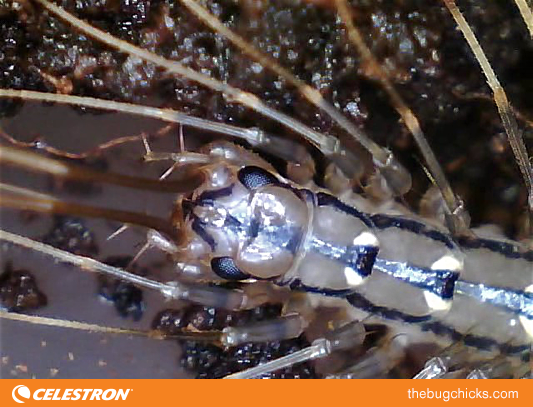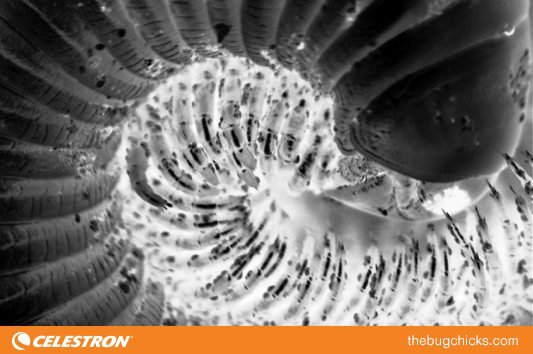Best Microscope Shots
I'm spending this week focusing on creating curricula for the big NSTA (National Science Teachers Association) conference in March. I'm going to be representing The Bug Chicks at the Celestron booth and leading two professional development workshops for teachers. I'm so excited! Bugs, scopes, teaching-- it is going to be SO. MUCH. FUN. I've been reviewing techniques that work and others that are not as successful while using the handheld and stationary digital microscopes. Since it is still so early in the year, I thought it would be a good idea to review my best shots of 2015. I'm getting better and better with the scopes and learning which one to use in each situation. In today's post I will highlight the two scopes I'm going to use in the teacher training.
Best MicroFi Shots
The MicroFi is a handheld microscope that works in tandem with an app for the iPad.
Why I like it:
I love the mobility of this little scope. I can pack it easily for traveling when I have my iPad Mini 3
It's small enough that I can use it with live animal shots. It works well as I'm trying got film or photograph in my small insect cages. Also, the lens section is small and can easily fit over an insect on a flat surface to get an very close-up look.
I like the iPad app, because I can see the photo on a larger screen that other digital scopes.
The colors I get!
I love this green weevil. Photographing pinned insects can be challenging because they are rigid and fragile, so if I hit the beetle with the tip of the scope I could damage or break the specimen. Also, the scope can hit the pin but with the MicroFi and the freedom I have to move it around- these problems are easier to manage.
These orange isopod pics were some of the first I took. I was not used to juggling the handheld MicroFi with using my left hand to deal with the tiny isopod, but I was happy with these three shots. Keeping the focus sharp with a handheld scope is tricky but practice makes perfect (well, better at least!)
I love the luminous quality of this photo. Working with leaves was a nice change because sometimes I struggle with the reflection of the lights on exoskeleton of insects. This picture shows me what the scope can do when light is absorbed rather than reflected. I'm looking for novel ways to soften the light.
I like that I was able to capture the compound eyes in this shot. In the future I'm going to get around to some focus stacking- but on this animal it was just NOT an option. It was so fast and so...leggy that I was lucky to get the shots I got.
Best FlipView shots
The FlipView is a cool little scope. It has a built-in screen that flips open. It shoots video and has some cool features.
Why I like it:
It is rechargeable!
It has a stand that is built in AND an attachable stand
5mp camera!
I used the FlipView for the millipede post. I love this picture because what I want to do as an educator is highlight and help to focus my audience on certain attributes. This picture really allows me to be successful in that endeavor. The FlipView's ergonomic design allowed me to quickly snapped shots as the legs were moving.
The other thing I love about the FlipView? There are photo options. I was playing around with the menu when the millipede was coiled and I turned the settings to take a negative shot. I love this! I would frame it.






